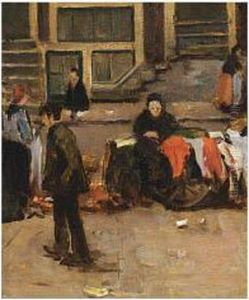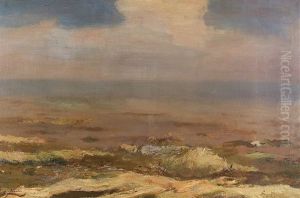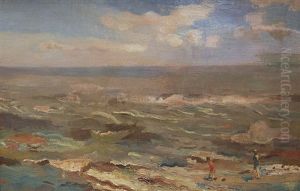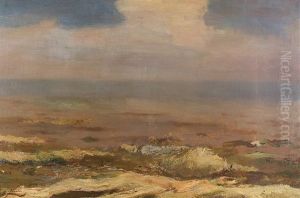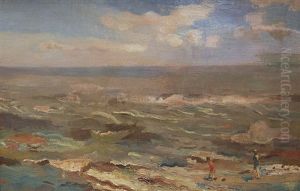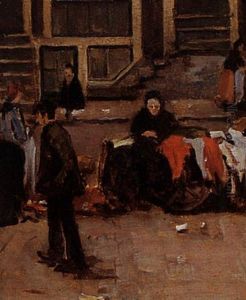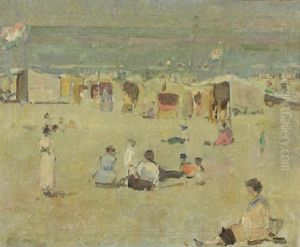Marinus Van Raalte Paintings
Marinus Van Raalte was an Australian artist, born in 1881 in London, England. He descended from a line of distinguished Dutch ancestors, which influenced not only his name but also his artistic sensibilities. His family emigrated to Australia during his childhood, which marked the beginning of his lifelong connection to the Australian landscape and its influence on his work. Van Raalte's artistic talents were evident from an early age, leading him to pursue formal education in art. He studied at various prestigious institutions, honing his skills and developing a unique style that would later define his career.
In the early 20th century, Van Raalte established himself as a prominent figure in the Australian art scene. He was known for his etchings, watercolors, and oil paintings, which often depicted Australian landscapes, flora, and fauna with a distinctive delicacy and detail. His work was characterized by a blend of realism and romanticism, capturing the essence of the Australian wilderness with a poetic touch. Van Raalte was particularly acclaimed for his etchings, a medium that allowed him to express the intricate textures and shades of his subjects with precision. His contributions to the field of etching were significant, helping to revive the art form in Australia during a time when it was experiencing a decline.
Throughout his career, Marinus Van Raalte exhibited widely, both in Australia and internationally. His exhibitions were met with critical acclaim, establishing him as a key figure in the art world. Despite his success, Van Raalte remained deeply connected to the Australian landscape, which continued to inspire his work. He sought to capture the transient beauty of nature, imbuing his art with a sense of tranquility and timelessness.
Marinus Van Raalte's legacy is marked by his dedication to the craft of etching and his profound appreciation for the natural world. He passed away in 1942, leaving behind a body of work that continues to be celebrated for its technical mastery and artistic beauty. His contributions to Australian art have been recognized in numerous posthumous exhibitions and retrospectives, ensuring that his vision and talent are remembered and appreciated by future generations.
